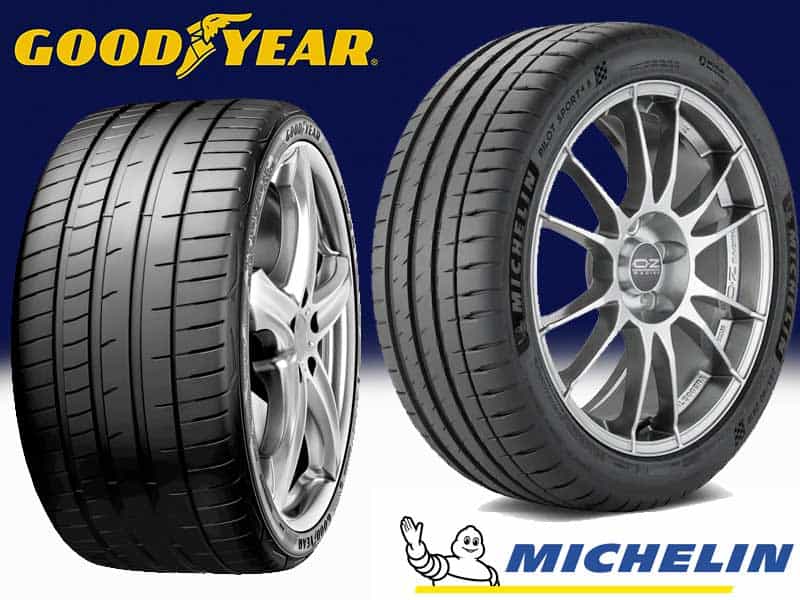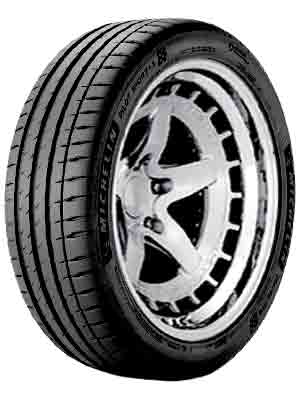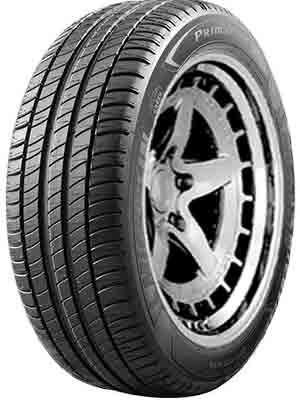Both tires offer excellent control on corners, with the asymmetric tread design providing higher stiffness at the center rib ensuring a proper grip throughout the drive. It was a close competition.
Both of these summer tires were tested in 225/40 R18 sizes on the same car and weight distribution. In terms of proportion, the composition of summer tires contains less natural rubber than the winter tire, which translates into a greater hardness of the tire, which can therefore be more resistant and perform better when exposed to higher temperatures.

Having a UHP tire that gives you a lot of room to play with while still making you feel safe behind the wheel can be hard to find. And, that’s precisely what both of these tires do.
With the Eagle F1 Supersport, Goodyear has developed a tire that provides excellent traction and cornering abilities in dry and wet weather conditions. This tire is especially great for people who love to get a little more feel out of their car because it has a very direct steering control and offers exceptional handling capabilities.
Michelin on the other hand, with its well-reputed name with their flagship, Michelin Pilot Sport 4 S is simply amazing. It is difficult to find any real weaknesses in them and only in-depth comparisons of each feature yields small and negligible differences in factors such as wet handling and noise as compared to other tires. All in all, it perfectly embodies a summer tire. With their top-notch dry and wet handling, hydroplaning, and guaranteed long tread life, these tires as exemplary. For these reasons, these tires are accredited by Ferrari, Mercedes, Porsche, and other car manufacturers.
Table of Contents
Comparing Michelin Pilot Sport 4S with Goodyear Eagle F1 SuperSport
Michelin Pilot Sport 4s

Michelin Primacy 3

So what do we know right off the top.
Well Michelin Pilot Sport 4S is better on grip on dry asphalt. It’s better in wet handling, aquaplaning and even has slightly lower rolling resistance.
On the other side, the Goodyear SuperSport was not very far off. And was better at dry handling as it was better able to manage heat more properly.
The tread pattern on both tires contributes a lot to all these factors.
Dry and Wet Traction Comparison:
Traction is divided into 2 parts. One is the grip that is calculated by measuring the braking distance. And the second is the overall handling time that is calculated by measuring the average time the tire took to finish off the laps.
With the help of Multi-Compound Construction and amazing tread pattern technology, the Michelin Pilot 4S becomes the king of dry grip.
On dry surfaces, the Michelin Pilot Sport 4S covered 33 meters to break from 100kph to 0kph. Where the Goodyear Eagle F1 SuperSport covered 34m. This makes Pilot Sport 4S better at Dry Grip.
Michelin Pilot Sport 4 S has a slightly larger road-contact patch area of the tread. (Still, the rolling resistance on both tires is almost the same). There are more blocks on the Goodyear, whereas you can see there are none on Michelin, as there are just sipes. This translates into more contact with the road, hence more grip.
On wet asphalts, Michelin Pilot Sport 4S took 35.5 in meters where Goodyear Eagle F1 SuperSport took 36.5 meters to go from 80 kph to 0 kph.
But still where Michelin Pilot Sport is better in dry grip, Goodyear SuperSport is better in dry handling. The overall average laps time for the SuperSport was lower than Michelin 4S. This is because of Goodyear’s outer shoulder design. The shoulder tread block placement on both tires boost the cornering ability.
Also, the greater no. of biting edges gripping the road surface during cornering, improves the maneuvering capability and power. This combination makes this tire better.
As for the handling time, the average time covered on laps for the Michelin Pilot Sport 4S was 94.5 seconds compared to Goodyear Eagle F1 SuperSport time of 94 seconds, making Goodyear better in handling on dry surfaces.
The handling of the Goodyear Eagle F1 Supersport on dry roads is exceptional!
The moment you start your drive, you’re going to feel the stable and almost comforting grip of these tires latch onto the tarmac.
The interesting thing about its grip is that it only gets stronger the faster you go with your tire. They use a special resin compound embedded in the first line of the tread, enhancing the micro contact with the road to provide increased grip on the road.
To enhance performance on dry roads, the tire comes with specialized shoulder blocks. The outside shoulder of the tire has a closed, serrated pattern which allows the tire to remain in maximum contact with the road through sharp turns. This increased stability of grip around corners, combined with excellent handling (coming from the asymmetric tread design), makes you incredibly confident when turning without the possibility of over steering or under steering, regardless of what kind of road it is. The cornering grip when you’re turning is also assisted by the bridge assists in the 1st groove. With the amount of traction these tires offer, you can easily push them to their absolute limits without feeling like you’re losing control.
However, the same handling of the Goodyear SuperSport is not translated into wet asphalts.
The average wet lap time for the Michelin Pilot Sport 4S was 65 seconds and the Goodyear Eagle F1 SuperSport was 66 seconds.
Dry handling is the only area where Goodyear SuperSport beats Michelin. Because in the Wet handling times and Aquaplaning, Michelin Pilot seems to be much better. With almost the same but still better when it comes to noise and rolling resistance.
This has to do with two things, first is ofcourse the contact patch area with the road which is greater on Michelin. The second is the temperature increase as the laps continue. Goodyear SuperSports manages heat well on dry roads where on wet roads, the temperature is not raised that much. So Pilot Sport was able to maintain the same level of traction throughout.
But still, thanks to the three extra-wide tread bands on SuperSport, that are made up of a wet compound, the overall performance of the Goodyear SuperSport is not too bad.
The tread with it’s dual plus technology in which there’s a two-part tread compound with a u-shaped arrangement to enhance its wet performance. The tread also contains three center blocks which enhance its performance on wet roads by providing a stronger grip on the road. Surprisingly, the tire handles wet weather pretty well, even at high speeds, maintaining that firm grip with the road and with its power shoulders, and you don’t feel like the car is leaning on the tires as you drive.
Even when you encounter a momentary loss of grip (which will only happen if you put more power into the wheel while turning), it’s predictable, and the moment the grip breaks, you can feel it and manage it accordingly. At no point, you feel like the car is getting away from you.
Rolling Resistance
The rolling resistance is the effort needed to keep a tire moving. With both tires, although the grip is excellent, the rolling resistance is relatively high, reducing the overall MPG.
For Michelin Pilot Sport 4S it is averaged around 9.6 kg/t where Goodyear Eagle F1 SuperSport experiences a rolling resistance of 9.7 kg/t.
This is a lot but it is understandable since both tires are UUHP tires.
UHP tires focus mainly on ensuring excellent dry and wet traction. No UUHP tire can match the low rolling resistance figures of a UHP (ultra high performance tire).
This high rolling resistance comes with a cost in the form of fuel expenses. However, these tires are usually common in high maintenance vehicles as these tires are accredited by such car manufacturers. Cost friendly production is not something that is kept in mind in the design and manufacture of these tires. Users are assumed to manage investment in fuel for these tires.
With both of the tires already heavy on the wallet, getting more fuel consumption makes these tires on of most expensive out there.
Still out of the two, Michelin Pilot 4S has slightly lower resistance to rolling. But it’s still nothing to brag about.
Hydroplaning/Aquaplaning:
Hydroplaning resistance is a tire’s ability to maintain contact with the road, despite the presence of water.
The Michelin Pilot Sport 4S has an excellent aquaplaning technique with the use of functional elastomers and silica. This gives the vehicle a great grip on the road even when there is water present between the tires and the surface of the road.
While other UUHP tires tend to feel sporty while driving on wet roads and do not have the best grip on them, the Sport 4S stands out by providing an understeer primary balance by providing exceptional grip on the road and giving you a safe and enjoyable drive.
The float speed of Michelin Pilot Sport 4S averages arround 78.5 km/h. Compared to Goodyear Eagle F1 SuperSport’s float speed of 74 km/h.
With the incredible wet traction this tire has shown, naturally, its hydroplaning abilities or its ability to push water out from underneath the tires as you drive is incredible.
This not only makes it safer, prevents skidding and sliding, but also maintains a firm grip on the road throughout the ride.
When it comes to pouring rain and extreme storms, the tire does lead to a little bit of over steer as you turn (especially on the rear).
However, overall, when driving through wet roads and a few puddles, the hydroplaning abilities of the tire hold up extremely well and make you feel very confident behind the wheel.
Noise and Comfort:
Overall, with both tires, although the ride is mostly quiet and comfortable, you still have to compromise a little bit on the comfort and the very slightly increased noise levels on this car.
Both Michelin Pilot Sport 4S and the Goodyear Eagle F1 SuperSport tires exhibt almost the same average external noise of 72 dB on asphalt
It is generally a passable level of noise but is nonetheless a factor that must be taken into account when making a purchase.
The reason behind these high noise levels on both is that both being UUHP tires, their performance is optimized for wet and dry traction.
A high-performance tire has a high rolling resistance which causes road friction, resulting in noises. Moreover, it is a tire focused on grip and stability. These contribute to the loud noises.
The comfort level, however, of these tires is admirable. They guarantee a safe drive and that you can drive confidently without worrying about the grip of your vehicle on the road.
This means that these tires still provide a very comfortable and relatively quiet ride with the help of their sound comfort technology.
This works like a sound-proof cushion on the tires that absorb the air vibrations as you’re driving and reduces the noise, making your ride quieter and more enjoyable.
When pushed to their limits, as the feel of the tire increases, you might also find an increase in the road noise.
When you’re driving on smooth roads such as the highways, the noise will be negligible. However, the noise levels might increase a little bit on more textured pavements.
They have very thick sidewalls, which help in increasing the comfort as you drive by absorbing the potholes and other imperfections on the road.
Michelin was very slightly better at the noise, still.
That’s because the tire comes with an aramid and nylon power line cover, which provides excellent footprint contact with the road. This helps in making the ride more stable throughout the speed range.
Treadwear:
The Goodyear Eagle F1 Supersport is a tire that is more prone to wear because of the intensity of its performance.
The average range of miles that you can get out of these tires is 5k to 10k miles; however, that will differ depending on the conditions in which you drive.
Certain protective features built into this tire to prolong the tread life, such as the rim protector and thickened sidewalls, will protect the tire against scratches from curbs.
When the tire does wear, it has been molded into a multi-radius shape to result in an even wear.
These tires are more likely to wear faster when their alignment is asymmetrical.
As the tires wear, they’ll also get louder with time and become more prone to oversteering and understeering.
Keep in mind that ultra-high performance tires are not built to last a long time either; instead, they have been designed to deliver the ultimate performance regarding traction, speed, and cornering abilities.
As for the Michelin. With a tread of 7.5 mm, these tires are highly durable as well.
These tires have a limited mileage warranty of 30,000 miles. Aside from that, they also carry standard materials and workmanship warranty for the life of the original tread. This is a remarkably good tread life, especially for a summer tire.
Generally, tires with excellent grip are not as efficient when it comes to tread life. This is because the better the grip, the more contact and friction with the road. These are factors that can easily wear away tires. The Sport 4 S, however, overcomes this trade off.
Another feature ensuring its safety is the premium touch finish, adding a dark velvet effect on the external sidewall.
Summary:
So what do we have here. On one side we have the king of dry grip. The Michelin Pilot 4S.
And on the other side we have the king of dry handling. The Goodyear SuperSport.
But along with it’s better grip on dry, Michelin Pilot Sport 4S is better on wet asphalt too. It’s better in wet handling, aquaplaning and even has slightly lower rolling resistance. But.. is expensive.
So the choice is yours to make.
The Goodyear Eagle F1 Supersport is a great tire that gives users an unmatched level of control and confidence. Its steering response is direct, and the handling is impressive, to say the least. The tire excels when it comes to maintaining its grip on both dry and wet roads. However, because of this tire’s excellent traction and performance, there is a slight loss of comfort in the ride quality and tread life.
And upholding the brand name, these tires are everything Michelin guarantees with its summer UUHP tires.


